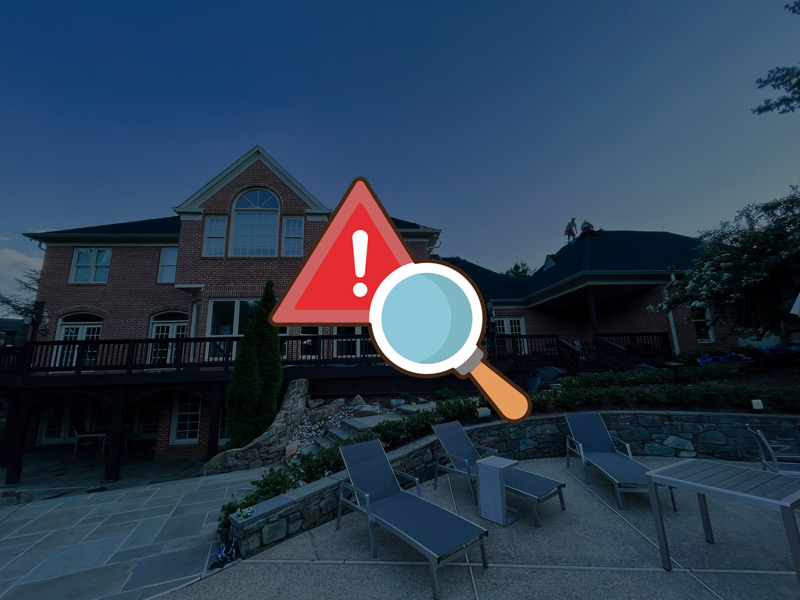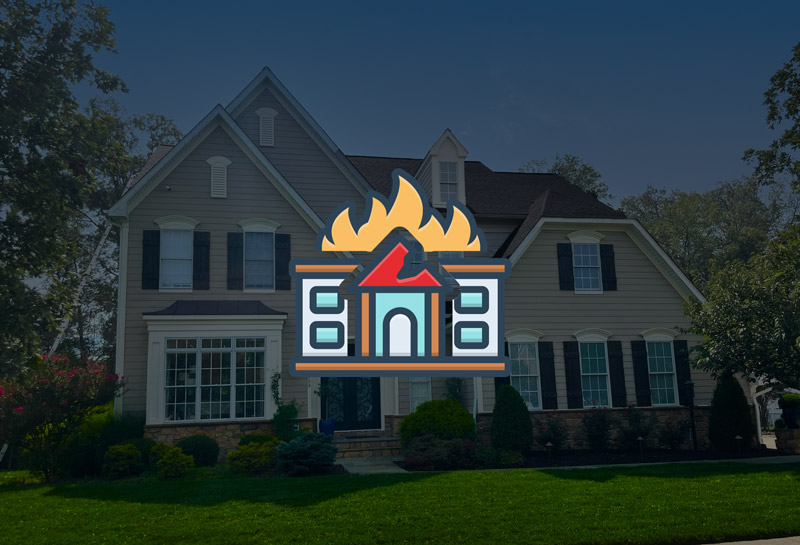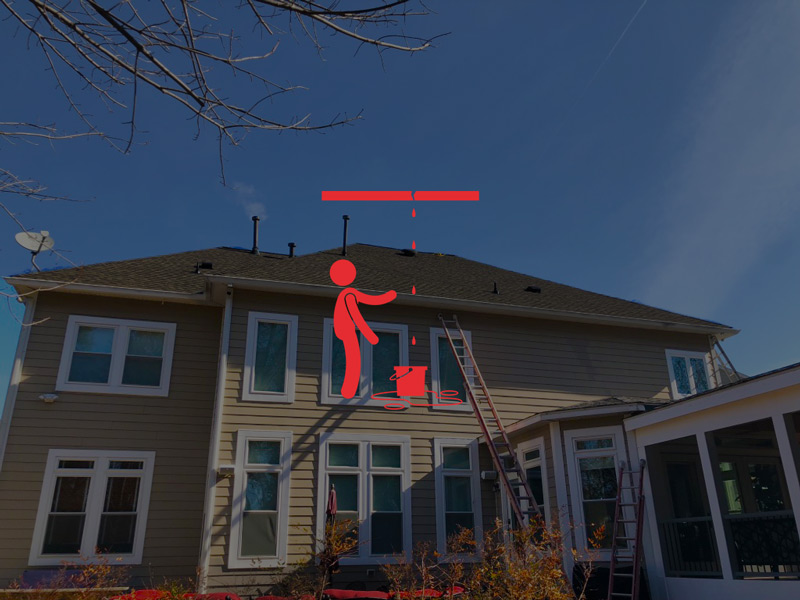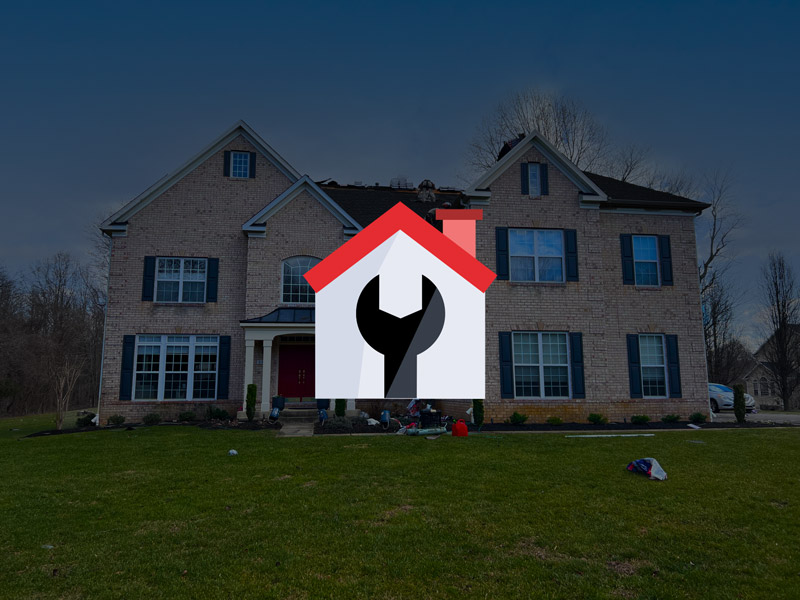Shingle Algae: Understanding, Prevention, and Treatment
Shingle algae, scientifically known as Gloeocapsa magma, is a type of cyanobacteria that tends to thrive in humid and shaded environments. It manifests as unsightly dark streaks or patches on your roof, often resembling black or greenish mold. While it might look harmless, shingle algae can be a nuisance that gradually degrades the quality of your roofing material.

Identifying Shingle Algae
Shingle algae can often go unnoticed until it becomes a glaring issue. In this section, we’ll explore how to identify shingle algae and avoid common mistakes when distinguishing it from other roof-related concerns.
Understanding the Appearance of Shingle Algae
Shingle algae typically makes its presence known through distinct visual cues. When you inspect your roof, look for dark streaks or stains that resemble mold or mildew. These streaks may appear black, greenish, or even brownish, depending on the specific strain of algae. They often cluster in shaded areas, where moisture tends to linger.
While the appearance of shingle algae is quite characteristic, it’s essential to note that it differs from other roof issues. Unlike algae, moss presents as a thicker, fuzzy growth on the roof’s surface. Lichen, on the other hand, can resemble small patches of greenish or whitish organisms. By correctly identifying shingle algae, you can take appropriate steps to address it.
Common Mistakes: Is it Algae or Something Else?
Misidentifying roof issues can lead to ineffective solutions or unnecessary concerns. One common mistake is confusing shingle algae with mold or mildew. While the appearance may be similar, the treatment methods differ, and mistaking one for the other can lead to wasted time and resources.

Causes and Contributing Factors
Understanding the causes and contributing factors of shingle algae growth is essential to combat this roofing nuisance effectively. In this section, we’ll explore the environmental elements, roofing material composition, and roof orientation and shading that play a role in shingle algae development.
Environmental Factors
Shingle algae thrives in specific environmental conditions. It has a particular fondness for humid climates and areas with consistent rainfall. If your home is situated in a region with high humidity levels, the chances of encountering shingle algae issues are considerably higher. Frequent rain provides the moisture that algae needs to proliferate.
Furthermore, shingle algae is more likely to appear on north-facing or shaded roofs. The reduced sunlight and longer periods of moisture retention on these surfaces create a perfect breeding ground for algae. So, if your roof is frequently in the shade or faces north, be extra vigilant.
Roofing Material Composition
The type of roofing materials you have can also influence shingle algae growth. Asphalt shingles, which are common on many residential roofs, provide an ideal substrate for algae to cling to and feed on. The limestone filler used in asphalt shingles acts as a food source for shingle algae, enabling it to multiply and spread.
While algae-resistant shingles are available, traditional asphalt shingles are still susceptible to infestation. Recognizing this vulnerability can help you take proactive measures to prevent and manage algae growth.
Roof Orientation and Shading
The orientation and shading of your roof can significantly impact its susceptibility to shingle algae. North-facing roofs tend to receive less direct sunlight throughout the day, leading to longer periods of moisture retention. This extended moisture exposure creates an environment where shingle algae can thrive.

Impact of Shingle Algae
Shingle algae may seem like a mere aesthetic nuisance, but its presence on your roof can have far-reaching consequences. In this section, we’ll explore the multifaceted impact of shingle algae on your home, from cosmetic damage to structural concerns and even health implications.
Cosmetic Damage: Black Streaks and Stains
The most apparent consequence of shingle algae is the unsightly appearance it imparts on your roof. The black streaks and stains caused by the algae can significantly diminish your home’s curb appeal. These dark blemishes can make a once-pristine roof appear neglected and aged, potentially affecting your property’s overall visual appeal.
Moreover, these stains are more than just surface-level eyesores. They represent a deeper issue, as shingle algae actively feeds on the roofing material. Over time, this feeding can lead to further discoloration and even structural deterioration, which brings us to the next point.
Structural Consequences
Beyond cosmetic concerns, shingle algae can have structural repercussions for your roof. As mentioned earlier, algae’s tendency to feed on the limestone filler within asphalt shingles can weaken the material. This weakening can lead to shingle degradation and a reduced lifespan for your roof.
Furthermore, the presence of shingle algae can contribute to moisture retention on your roof’s surface. Excess moisture, especially in shaded areas, can promote the growth of moss and lichen. These organisms, when allowed to proliferate, can exacerbate the structural problems caused by shingle algae and potentially compromise the integrity of your roof.
Health Implications
While the health implications of shingle algae are less direct than its cosmetic and structural impacts, they should not be underestimated. Shingle algae can potentially harbor allergens and irritants that become airborne when disturbed. If these particles find their way into your home, they could exacerbate respiratory issues and allergies, especially for individuals with sensitivities.

Prevention and Treatment
Now that we’ve explored the causes and consequences of shingle algae, it’s time to discuss how to prevent its growth and tackle existing issues. This section provides insights into both DIY preventative measures and professional treatments.
Roof Maintenance Tips
Regular roof maintenance is a crucial first step in preventing shingle algae from taking hold. Here are some simple yet effective tips to keep your roof in top condition:
- Routine Cleaning: Gently remove debris like leaves and branches from your roof to prevent moisture buildup. Ensure your gutters are clear to facilitate proper drainage.
- Trim Overhanging Branches: If you have nearby trees, trim branches that cast shadows on your roof. Increased sunlight exposure can discourage algae growth.
- Zinc or Copper Strips: Consider installing zinc or copper strips along the ridges of your roof. These metals release ions that inhibit algae growth over time.
Environmentally Friendly Solutions
If you prefer eco-friendly options, there are natural solutions you can use to deter shingle algae. For instance:
- Vinegar Spray: A mixture of water and white vinegar can be sprayed on affected areas. This can help remove existing algae and deter its return.
- Sunlight: Prune trees and remove objects that cast shadows on your roof. Allowing more sunlight exposure can hinder algae growth.
Roof Cleaning Services
When shingle algae has already taken hold, professional roof cleaning services can be a highly effective solution. These services employ methods like soft washing, which uses low-pressure water and specialized cleaning agents to safely remove algae and stains without damaging your shingles.
Algae-Resistant Shingles
If you’re planning to replace your roof or install new shingles, consider investing in algae-resistant shingles. These shingles are designed with built-in granules that release copper over time, preventing algae growth. While this is a more proactive approach, it can save you from future algae-related hassles.
View More Articles
Please Share!











